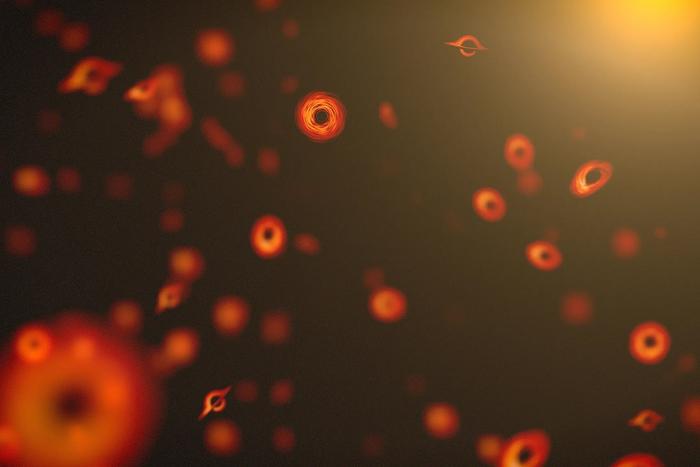Scientists have proposed an intriguing new way to search for primordial black holes – microscopic objects formed in the early universe that could explain dark matter. These cosmic remnants might leave behind distinctive signatures ranging from hollow asteroids in space to microscopic tunnels in everyday materials like rocks and glass.
Published in Physics of the Dark Universe | Estimated reading time: 4 minutes
In a novel theoretical study, researchers De-Chang Dai from National Dong Hwa University and Dejan Stojkovic from the University at Buffalo have outlined how these elusive objects might interact with planets, asteroids, and even materials here on Earth. Their work suggests that rather than requiring expensive specialized equipment, evidence of primordial black holes might be hiding in plain sight.
The study examines two potential scenarios. In the first, a primordial black hole becomes trapped within a rocky planet or asteroid that has a liquid core. “If the object has a liquid central core, then a captured PBH can absorb the liquid core, whose density is higher than the density of the outer solid layer,” explains Stojkovic. This process could leave behind a hollow shell – provided it’s not too large to collapse under its own weight.
Through precise calculations comparing material strengths with surface tension and density, the researchers determined that such hollow objects could exist stably up to about one-tenth of Earth’s radius. These structures might be detectable through careful astronomical observations, as their unusually low density would stand out during orbital studies.
The second scenario involves faster-moving black holes creating microscopic tunnels as they pass through solid objects. The team calculated that a primordial black hole with a mass of 10^22 grams would leave behind a tunnel just 0.1 microns in diameter – small but potentially visible under a microscope.
While the odds of finding such evidence are admittedly low – the researchers calculate a probability of 0.000001 for a primordial black hole passing through a billion-year-old boulder – the search requires minimal resources and could yield extraordinary results. “You have to look at the cost versus the benefit. Does it cost much to do this? No, it doesn’t,” notes Stojkovic.
The research, supported by the National Science Foundation and the National Science and Technology Council (Taiwan), represents a new approach to solving one of physics’ most persistent mysteries – the nature of dark matter. As Stojkovic emphasizes, “We don’t need a straightforward extension of the existing models. We probably need a completely new framework altogether.”
Glossary
- Primordial Black Hole: A hypothetical type of black hole formed in the early universe, before the first stars, with masses potentially as small as a mountain compressed to atomic size.
- Dark Matter: Invisible matter that makes up approximately 85% of the universe’s total mass, whose nature remains one of physics’ greatest mysteries.
- Surface Tension: The property of a material’s surface that allows it to resist external forces, crucial for determining whether hollow structures can remain stable.
Test Your Knowledge
What is the maximum size a hollow structure could be without collapsing?
According to the research, such a hollow object could be no larger than one-tenth of Earth’s radius.
How could astronomers potentially identify hollow objects in space?
By studying their orbits to determine their mass and density – if an object’s density is unusually low for its size, it might be hollow.
What size tunnel would a primordial black hole with a mass of 10^22 grams create?
It would create a tunnel approximately 0.1 microns in diameter, which would be visible under a microscope.
How do the material properties of a medium affect its interaction with a fast-moving primordial black hole, and why wouldn’t it be fatal to humans?
When a projectile moves through a medium faster than the speed of sound, the medium’s molecular structure doesn’t have time to respond. Human tissue’s small tension means a PBH would pass through without causing significant damage, unlike in rigid materials where it might leave a tunnel.
Enjoy this story? Subscribe to our newsletter at scienceblog.substack.com.
If our reporting has informed or inspired you, please consider making a donation. Every contribution, no matter the size, empowers us to continue delivering accurate, engaging, and trustworthy science and medical news. Independent journalism requires time, effort, and resources—your support ensures we can keep uncovering the stories that matter most to you.
Join us in making knowledge accessible and impactful. Thank you for standing with us!

